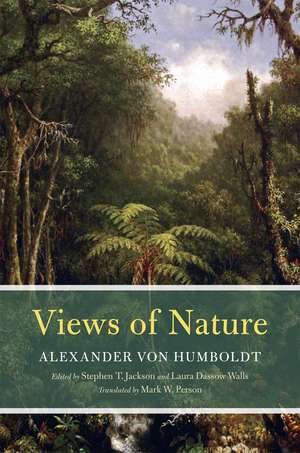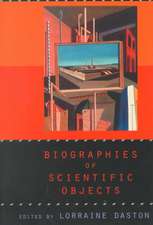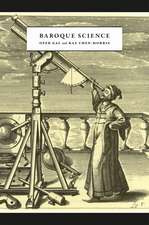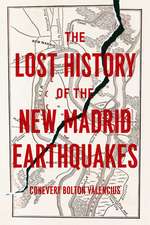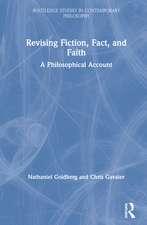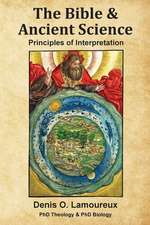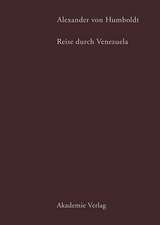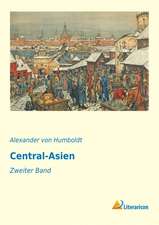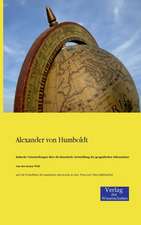Views of Nature
Autor Alexander von Humboldt Editat de Stephen T. Jackson, Laura Dassow Walls Traducere de Mark W. Personen Limba Engleză Paperback – 28 noi 2016
While
the
influence
of
Alexander
von
Humboldt
(1769–1859)
looms
large
over
the
natural
sciences,
his
legacy
reaches
far
beyond
the
field
notebooks
of
naturalists.
Humboldt’s
1799–1804
research
expedition
to
Central
and
South
America
with
botanist
Aimé
Bonpland
not
only
set
the
course
for
the
great
scientific
surveys
of
the
nineteenth
century,
but
also
served
as
the
raw
material
for
his
many
volumes—works
of
both
scientific
rigor
and
aesthetic
beauty
that
inspired
such
essayists
and
artists
as
Emerson,
Goethe,
Thoreau,
Poe,
and
Frederic
Edwin
Church.
Views of Nature, orAnsichten der Natur, was Humboldt’s best-known and most influential work—and his personal favorite. While the essays that comprise it are themselves remarkable as innovative, early pieces of nature writing—they were cited by Thoreau as a model for his own work—the book’s extensive endnotes incorporate some of Humboldt’s most beautiful prose and mature thinking on vegetation structure, its origins in climate patterns, and its implications for the arts. Written for both a literary and a scientific audience,Views of Naturewas translated into English (twice), Spanish, and French in the nineteenth century, and it was read widely in Europe and the Americas. But in contrast to many of Humboldt’s more technical works,Views of Naturehas been unavailable in English for more than one hundred years. Largely neglected in the United States during the twentieth century, Humboldt’s contributions to the humanities and the sciences are now undergoing a revival to which this new translation will be a critical contribution.
Views of Nature, orAnsichten der Natur, was Humboldt’s best-known and most influential work—and his personal favorite. While the essays that comprise it are themselves remarkable as innovative, early pieces of nature writing—they were cited by Thoreau as a model for his own work—the book’s extensive endnotes incorporate some of Humboldt’s most beautiful prose and mature thinking on vegetation structure, its origins in climate patterns, and its implications for the arts. Written for both a literary and a scientific audience,Views of Naturewas translated into English (twice), Spanish, and French in the nineteenth century, and it was read widely in Europe and the Americas. But in contrast to many of Humboldt’s more technical works,Views of Naturehas been unavailable in English for more than one hundred years. Largely neglected in the United States during the twentieth century, Humboldt’s contributions to the humanities and the sciences are now undergoing a revival to which this new translation will be a critical contribution.
| Toate formatele și edițiile | Preț | Express |
|---|---|---|
| Paperback (2) | 185.66 lei 3-5 săpt. | +17.45 lei 6-12 zile |
| University of Chicago Press – 28 noi 2016 | 185.66 lei 3-5 săpt. | +17.45 lei 6-12 zile |
| Cambridge University Press – 7 dec 2011 | 472.97 lei 6-8 săpt. | |
| Hardback (1) | 585.81 lei 6-8 săpt. | |
| University of Chicago Press – 4 aug 2014 | 585.81 lei 6-8 săpt. |
Preț: 185.66 lei
Nou
Puncte Express: 278
Preț estimativ în valută:
35.53€ • 37.99$ • 29.62£
35.53€ • 37.99$ • 29.62£
Carte disponibilă
Livrare economică 27 martie-10 aprilie
Livrare express 12-18 martie pentru 27.44 lei
Preluare comenzi: 021 569.72.76
Specificații
ISBN-13: 9780226422473
ISBN-10: 022642247X
Pagini: 344
Ilustrații: 3 tables
Dimensiuni: 152 x 229 x 33 mm
Greutate: 0.45 kg
Editura: University of Chicago Press
Colecția University of Chicago Press
ISBN-10: 022642247X
Pagini: 344
Ilustrații: 3 tables
Dimensiuni: 152 x 229 x 33 mm
Greutate: 0.45 kg
Editura: University of Chicago Press
Colecția University of Chicago Press
Notă biografică
Stephen T. Jackson is professor emeritus of botany and ecology at the University of Wyoming and the editor of von Humboldt’s Essay on the Geography of Plants. He lives in Tucson, AZ. Laura Dassow Walls is the William P. and Hazel B. White Professor of English at the University of Notre Dame and the author of several books, including The Passage to Cosmos: Alexander von Humboldt and the Shaping of America. She lives in Granger, IN. Mark W. Person is associate academic professional lecturer in German in the Department of Modern and Classical Languages and director of the language lab at the University of Wyoming. He lives in Laramie, WY.
Cuprins
Editors’ Preface
Introduction: Reclaiming Consilience
Translator’s Note
Humboldt’s Ansichten der Natur Measurement Units
Views of Nature
Preface to the First Edition
Preface to the Second and Third Editions
1. Concerning the Steppes and Deserts
2. Concerning the Waterfalls of the Orinoco near Atures and Maypures
3. The Nocturnal Wildlife of the Primeval Forest
4. Hypsometric Addenda
5. Ideas for a Physiognomy of Plants
6. Concerning the Structure and Action of Volcanoes in Various Regions of the Earth
7. The Life Force, or The Rhodian Genius
8. The Plateau of Cajamarca, the Old Residential City of the Inca Atahualpa; First Sight of the Pacific from the Ridge of the Andes Chain
Index
Recenzii
“Ever
since
his
celebrated
journey
of
exploration
of
the
Americas,
Alexander
von
Humboldt
has
been
a
defining
figure
of
Western
scientific
culture.
Today,
his
international
reputation
is
enjoying
a
revival,
especially
in
North
America.
Now
the
University
of
Chicago
Press
is
adding
to
its
list
of
Humboldtiana
a
new
edition
of
von
Humboldt’s
most
readable
book,Views
of
Nature,
skillfully
translated
from
the
original
German
and
expertly
introduced.
It
opens
up
to
a
twenty-first-century
readership
the
magnificent
panorama
of
tropical
American
landscapes,
the
aesthetic
pleasure
of
which
connoted—in
von
Humboldt’s
view—the
underlying
harmony
of
lawlike
unity
that
pervades
the
cosmos.”
“Despite von Humboldt’s tremendous influence on many of the world’s greatest writers and naturalists, including Goethe, Darwin, Emerson, and Thoreau, outside of specialist circles, this new translation has not received the attention it richly deserves. This is something I intend to do my part in helping to rectify at the earliest opportunity.”
“It is easy to overlook the work of the translator in reviewing a translation—a fate keenly felt by some of the learned women who slogged away at turning Humboldt’s French and German prose into English in the nineteenth century. Person is to be warmly congratulated on a highly readable translation that loses nothing of the complexity of the original. I consider his “Translator’s Note” a fundamental part of the translation itself, not only because it reminds us of his essential mediating role in the production of a truly modern rendering of Humboldt’s work. The issues that he addresses—sensibility to Humboldt’s style and sentence structure, idiosyncrasies and outdated terms in the original—confront us in a very immediate way with the business of transforming one series of ideas and images into a different language, culture, and, in this case, time. As scholars working in Humboldt studies gear up for commemorations in honor of the 250th anniversary of Humboldt’s birth in 2019, this new edition of the Ansichten der Natur will prove an invaluable basis for further discussion and research.”
“Long awaited by Humboldtians, this illuminating new edition of Views of Nature—offering not just vivid natural scenes (‘views’ in the most obvious sense) but also von Humboldt’s still-fresh views on the significance of nature and its study—is a gift that transcends disciplines and even history. A book that was deeply relevant and constructively challenging in the age of empire has become even more necessary in the age of climate change. Today, thanks in part to the acutely sensitive translator and editors, von Humboldt’s finest one-volume work comes across as a perfect blend of art and science, a paean to interconnection that is both humbling and heartening.”
“Alexander von Humboldt’s wide-ranging Views of Nature is a masterpiece of nineteenth-century natural history, at once science and art. Mark W. Person’s stunning new translation makes the wonders of this classic accessible to the English-language world of the present.”
Descriere
While the influence of Alexander von Humboldt (1769–1859) looms large over the natural sciences, his legacy reaches far beyond the field notebooks of naturalists. Humboldt’s 1799–1804 research expedition to Central and South America with botanist Aimé Bonpland not only set the course for the great scientific surveys of the nineteenth century, but also served as the raw material for his many volumes—works of both scientific rigor and aesthetic beauty that inspired such essayists and artists as Emerson, Goethe, Thoreau, Poe, and Frederic Edwin Church.
Views of Nature, or Ansichten der Natur, was Humboldt’s best-known and most influential work—and his personal favorite. While the essays that comprise it are themselves remarkable as innovative, early pieces of nature writing—they were cited by Thoreau as a model for his own work—the book’s extensive endnotes incorporate some of Humboldt’s most beautiful prose and mature thinking on vegetation structure, its origins in climate patterns, and its implications for the arts. Written for both a literary and a scientific audience, Views of Nature was translated into English (twice), Spanish, and French in the nineteenth century, and it was read widely in Europe and the Americas. But in contrast to many of Humboldt’s more technical works, Views of Nature has been unavailable in English for more than one hundred years. Largely neglected in the United States during the twentieth century, Humboldt’s contributions to the humanities and the sciences are now undergoing a revival to which this new translation will be a critical contribution.
Views of Nature, or Ansichten der Natur, was Humboldt’s best-known and most influential work—and his personal favorite. While the essays that comprise it are themselves remarkable as innovative, early pieces of nature writing—they were cited by Thoreau as a model for his own work—the book’s extensive endnotes incorporate some of Humboldt’s most beautiful prose and mature thinking on vegetation structure, its origins in climate patterns, and its implications for the arts. Written for both a literary and a scientific audience, Views of Nature was translated into English (twice), Spanish, and French in the nineteenth century, and it was read widely in Europe and the Americas. But in contrast to many of Humboldt’s more technical works, Views of Nature has been unavailable in English for more than one hundred years. Largely neglected in the United States during the twentieth century, Humboldt’s contributions to the humanities and the sciences are now undergoing a revival to which this new translation will be a critical contribution.
